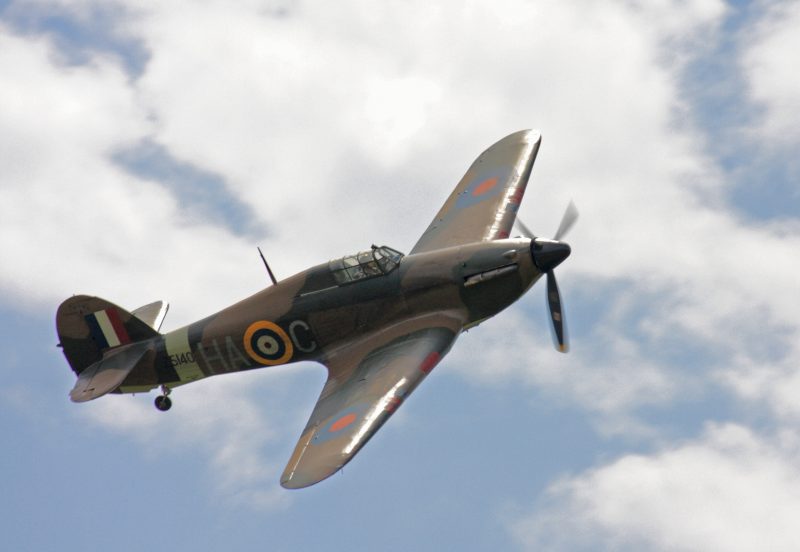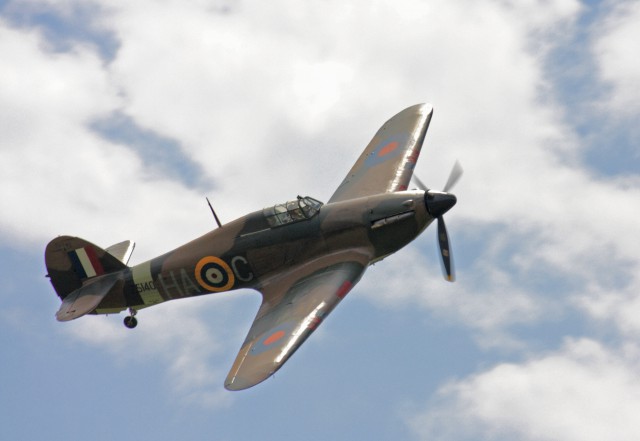Known as the workhorse of World War Two, the Hawker Hurricane was part of the reason Allied forces were able to gain victory. The Hurricane was crucial to airborne fighting, especially early on in the war during such conflicts as the Battle of Britain. It was manufactured from 1937-44, in service for almost the duration of the war.
The Battle of Britain remains one of the turning points in the war, since it stopped Germany invading and occupying the UK and enlarging its occupied territory. The battle was fought with only a third of the aircraft that the Germans had. Britain had around 900 Spitfires and Hurricanes in its Royal Air Force fleet, while Germany’s Luftwaffe had more than 2500 aircraft.
Nevertheless because of the agility, speed and accuracy of the Spitfire, and the cover provided by the stalwart Hurricane, Britain downed almost 2000 of the German fleet. The Hurricane was able to take a beating from the German aircraft, while the Spitfire took down the enemy aircraft.
Even before the US entered the war in 1941, some American pilots and air servicemen had joined the British RAF to support the war effort. They were known as the ‘Eagle Squadrons’ and they took to the skies, mostly in Hurricanes.
Interestingly, Hurricane pilots had to have a permanent oxygen supply when flying, since the aircraft had an inherent problem with carbon monoxide leaking into the cockpit. Several attempts were made to fix it, but it was never completely remedied.
There were various models of the Hurricane including the Mark 1, Mark 2, the Sea Hurricane, the Hurricane Hotspur and the Typhoon. All the different models were built to fight in different operations with specific bespoke fixtures and fittings.
A biplane version of the Hurricane was at one time developed. The Hillson carried additional fuel so it could fly for longer periods. But its huge weight stopped it from being service efficient, the Anglotopia.net reports.
The Hurricane’s designer, Sydney Camm, used elements from many already existing aircraft including parts and building requirements. In the 1930s there was little finance and extravagant development just wasn’t possible. This turned out to be a blessing in disguise, as it meant that the Hurricane was easily repairable when it returned from battle.
Almost 15,000 Hurricanes were made overall, today around 13 remain which can still fly, while many non-airborne craft are on display in museums.
The Hurricane can fly at a maximum speed of 340 mph, at a range of around 470 miles and altitude of 35,000 ft. It is around 31 ft long, 13 ft high and 40 ft across the wings.

